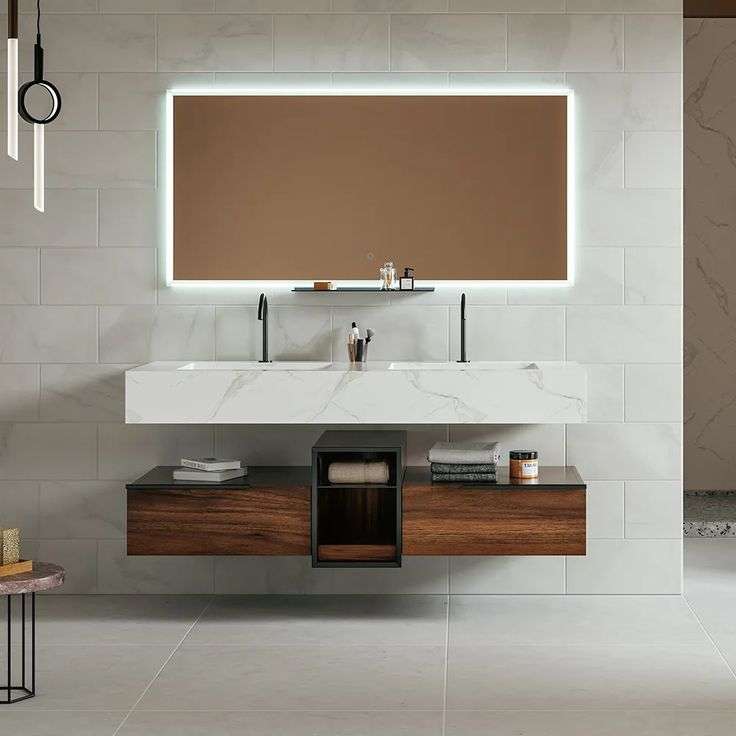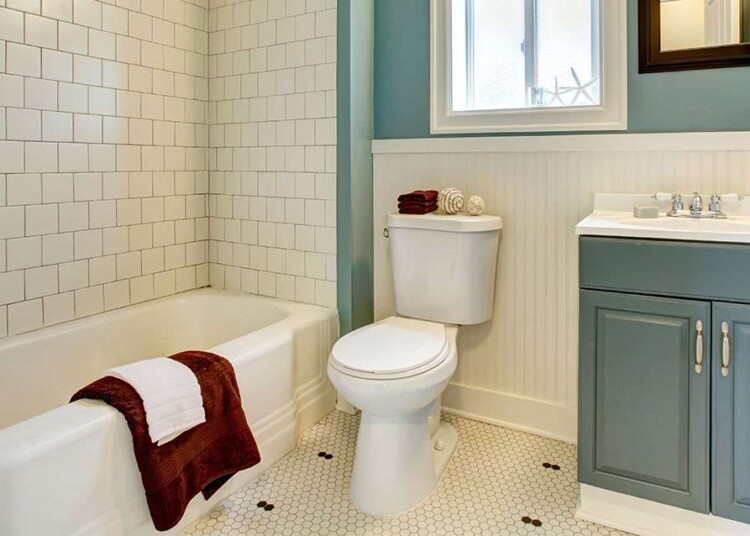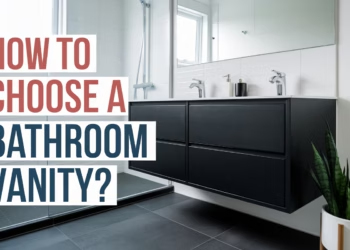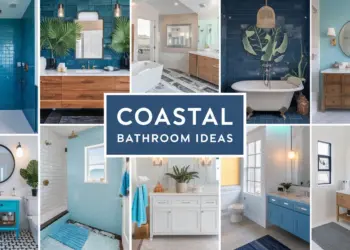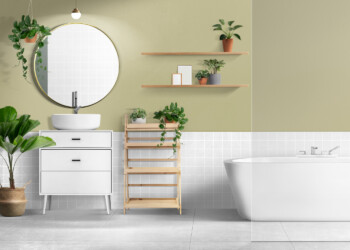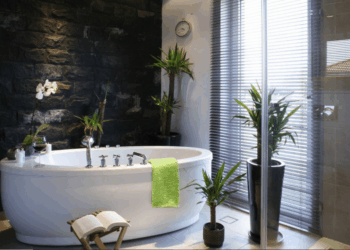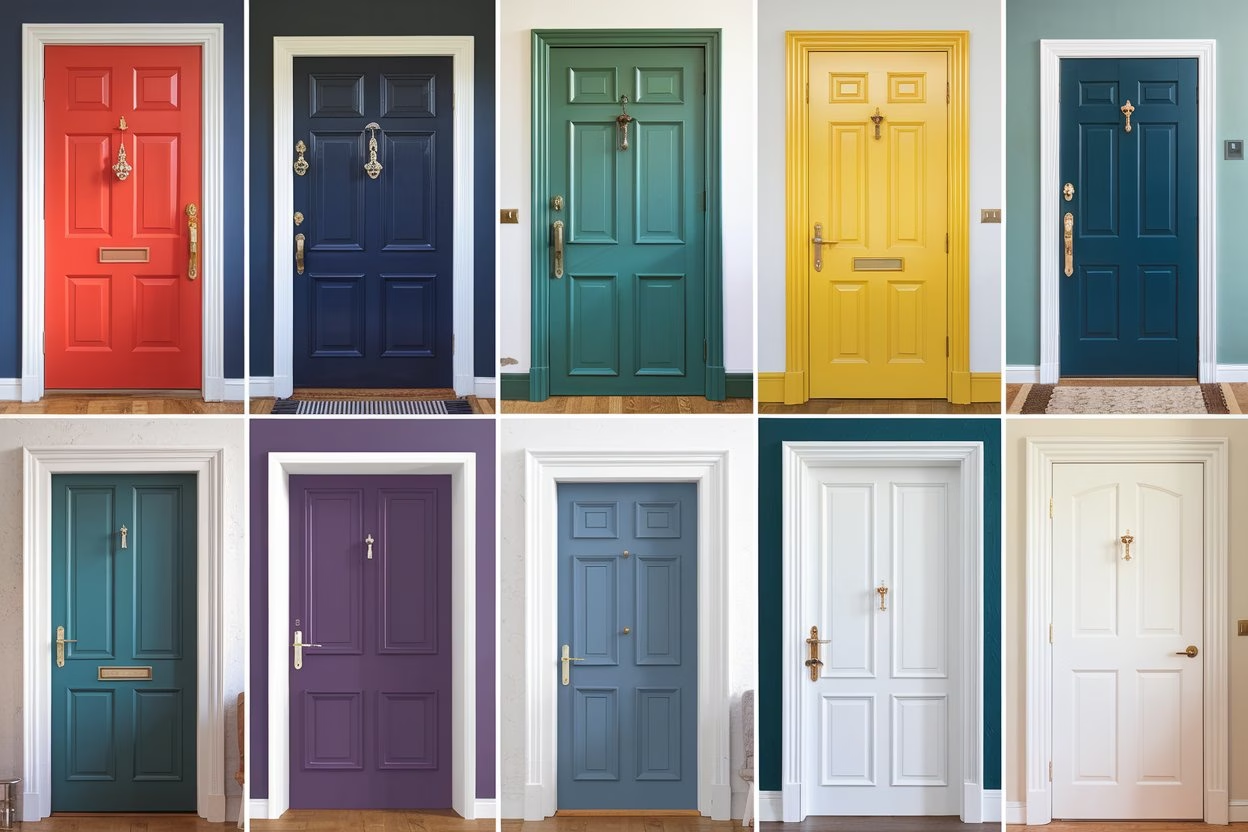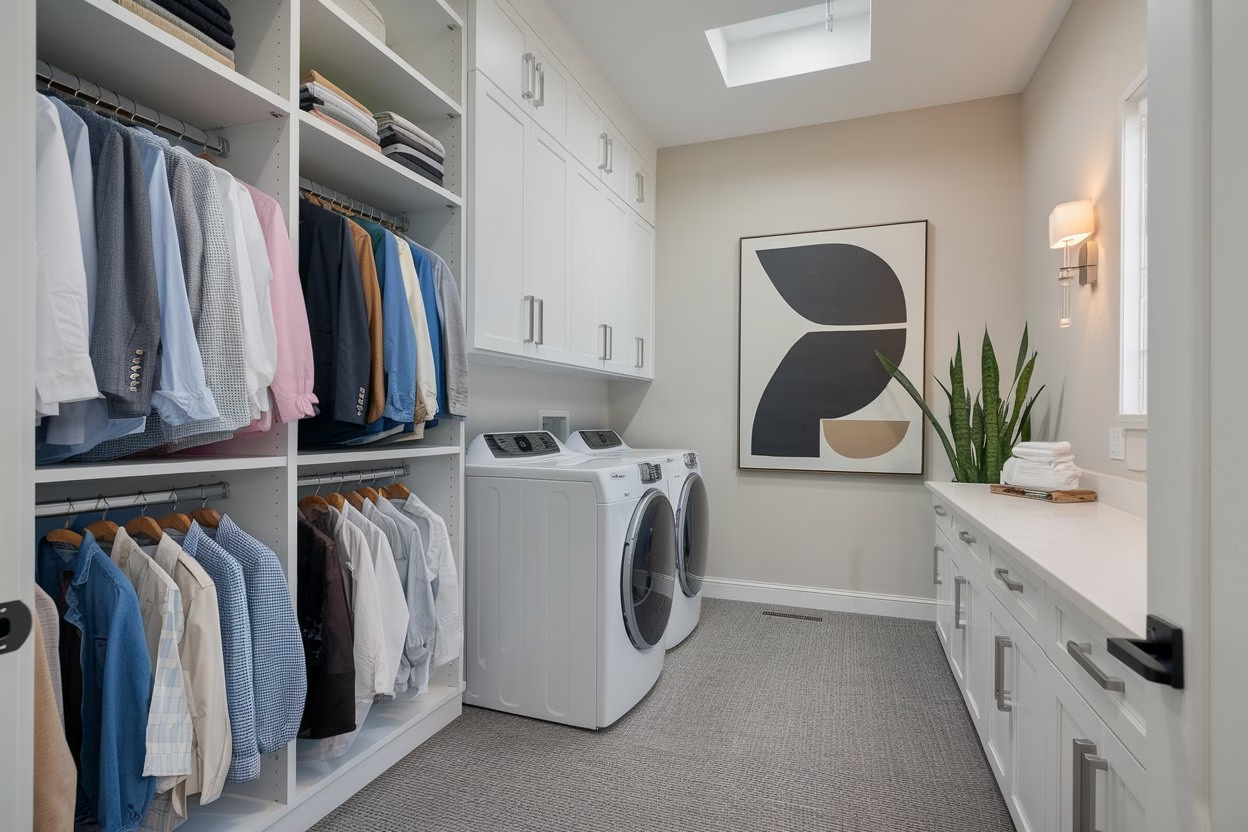When renovating your bathroom, you want to make sure that the style and layout is exactly what you want. Focal points like showers, tubs, mirrors and vanities greatly influence the look of your space. Bathroom vanity comes with endless customization options, allowing you to create whatever you desire.
While this gives you a lot of creative freedom, a multitude of options can also seem overwhelming and confusing.
Do you want a small bathroom vanity? Are you going for a modern look? Is there enough storage space for you? Read this guide to bathroom vanities and you’ll have a good idea of what you really want.
Choose the best bathroom vanity for your home
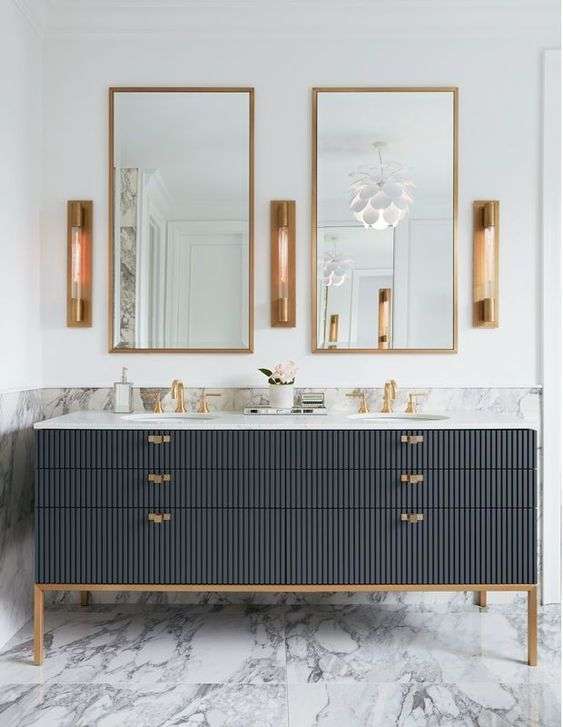
Style, functionality and materials are all things to consider when selecting your perfect bathroom vanity. For example, you might choose an elegant floating double vanity in a large, luxurious bathroom, or a pedestal sink in a small bathroom. Here are a few things to keep in mind as you search for the perfect bathroom vanity.
Space
If you have the space, you can get a large, deep bathroom vanity that gives you more storage and customization options. For smaller bathrooms, a vanity that doesn’t obstruct your view is a better avenue.
Materials
What is used to build your vanity impacts the look, durability and maintenance required. The material chosen can also impact its installation. A tile countertop can be done by yourself (with the proper experience), but a concrete countertop must be installed by professionals. The aesthetics you desire will influence your material selection.
Location
The location of the plumbing restricts the options in relation to the bathroom vanity. Be sure to take note of this when looking at your options. For example, a corner vanity will require moving your plumbing (thus increasing the cost) unless it is already located there.
Storage
When choosing a bathroom vanity, you need to think about your storage needs. Vanities have many storage options, such as drawers, cabinets, and even built-in towel racks. Storage solutions should meet the requirements of the people who will be using it.
For example, master and shared bathrooms require more storage than a guest bathroom used much less often.
Faucets
Vanities typically have pre-made openings that will determine whether you should install a single-handle, center-mounted faucet or a wider faucet. Fortunately, styles and finishes are not restricted, so you can still achieve the aesthetic you desire.
Hardware and accessories
Cabinet handles are small but powerful accents that come in countless colors and shapes. So you can select the appropriate style for your bathroom vanity. Accessories such as towel bars, toilet paper holders and baskets can help you better personalize your space and create harmony throughout the room!
Side of the bathroom vanity and backsplash
If your bathroom vanity is against the wall, you may also want to install a backsplash behind or around it. This way, you can add a little more style and substance to the room. This is not necessary for freestanding vanities or tile walls.
Each room offers several options for customization, although they can come at a higher cost. Large vanities, intricate storage solutions, premium fixtures and luxury materials can drive up the price significantly.
Make sure you know your budget and familiarize yourself with the expenses required to do a bathroom renovation. Keep in mind that you can afford your dream bathroom vanity without breaking the bank.
Determine your style
There is many different styles of bathroom vanity, each with its own unique design and features. Here are some popular styles of vanities:
Traditional:
Traditional bathroom vanity typically feature ornate details, such as raised panel doors and decorative molding. It are often made of wood and have a classic, elegant look.
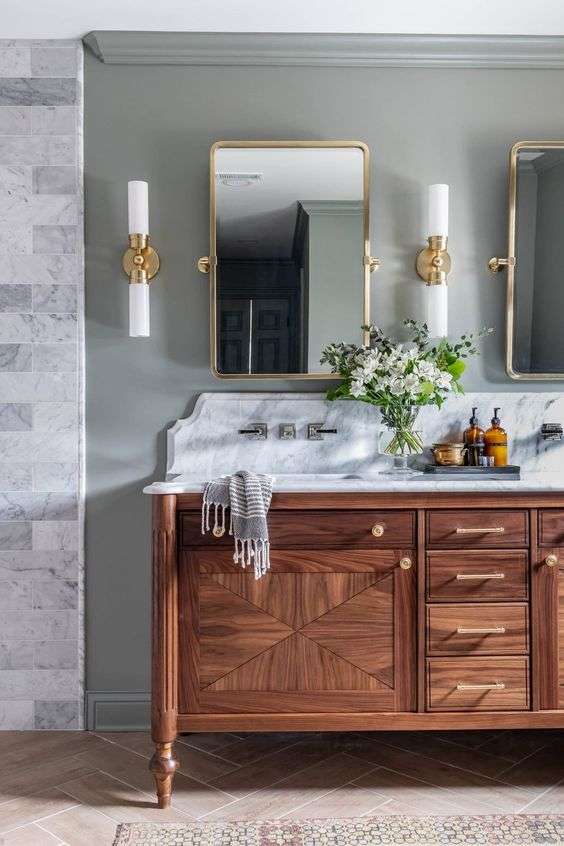
Modern:
Modern bathroom vanity is sleek, simple, with clean lines, and minimal ornamentation. It often features flat-panel doors and drawers, which made from materials like metal or glass.
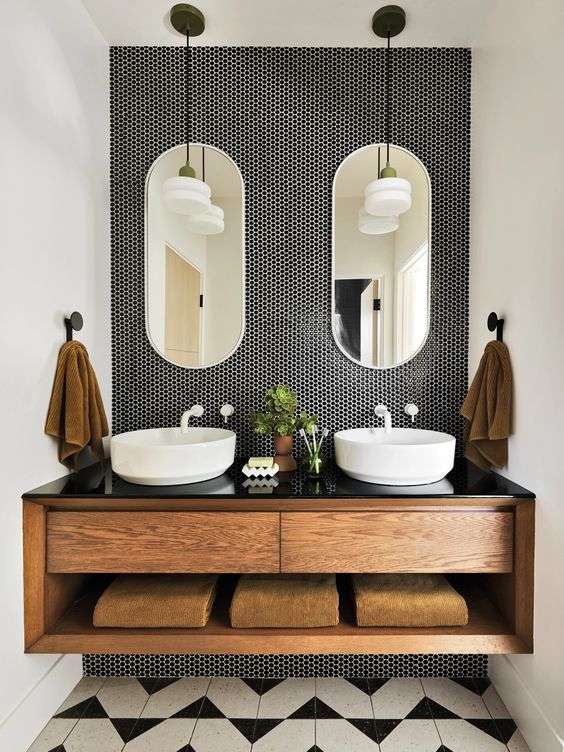
Transitional:
Transitional bathroom vanity blend elements of both traditional and modern styles. It may features simple lines with traditional details like raised panel doors or decorative hardware.
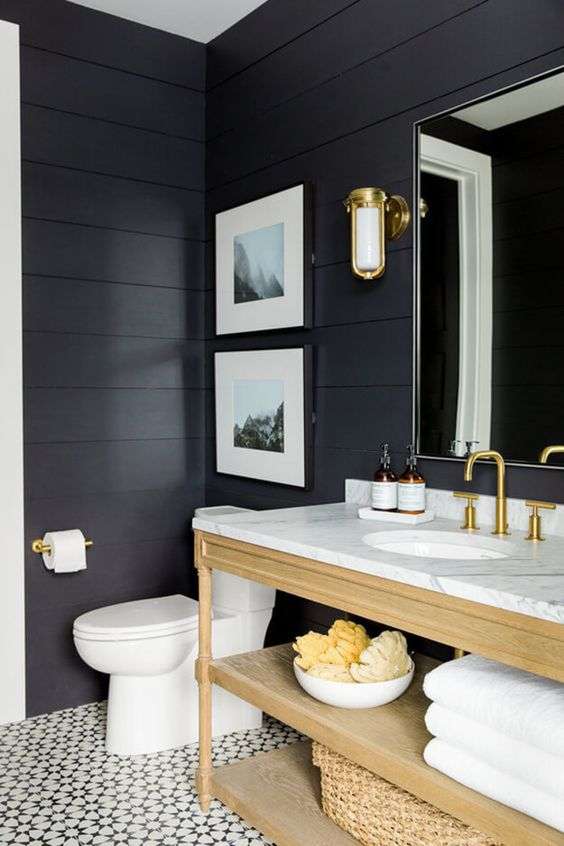
Rustic:
Rustic bathroom vanity has a natural, warm feel and often made from materials like reclaimed wood or stone. It may features distressed finishes and decorative hardware like wrought iron.
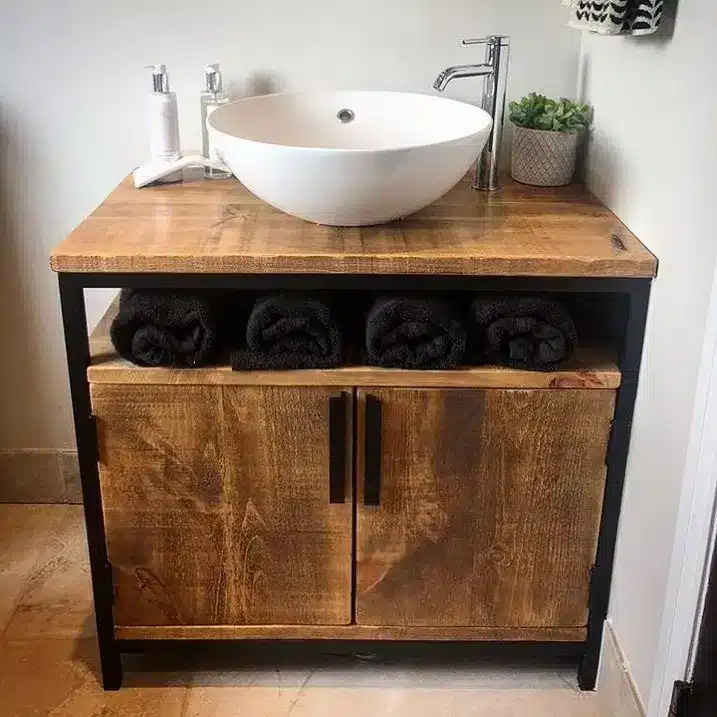
Farmhouse:
Farmhouse bathroom vanity have a rustic, country-inspired look, often feature apron-front sinks, and open shelving. It made from natural materials like wood or have a distressed finish.

Measure your space for bathroom vanity
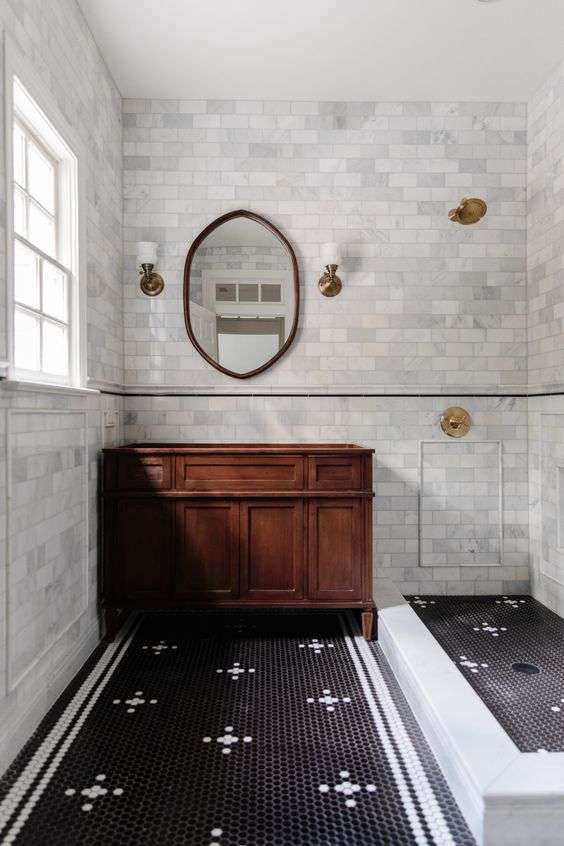
Before you go any further, you’ll need to measure your bathroom so you know what you can fit safely and accessibly. This will help you know what options you have for your bathroom vanity. Follow these tips to maximize the utility of your bathroom, whether it’s large or small.
Check the location of the plumbing
It is important to note the location of the plumbing for the sink: this determines the ideal location for your vanity. Changing the location of the plumbing is possible, but expensive. Obviously, a certified plumber (which your Verified Bathroom Contractor can easily hire for you) must do all plumbing work.
Compliance with standards
There are building code standards for the installation of vanities. These may vary depending on the region, but most codes require a minimum of 21″ (54 cm) of unoccupied space in front of the vanity and 15″ (38 cm) between the toilet and the vanity.
Height
Most vanities measure 31″ (79 cm) from the floor, although some can reach 35″ (89 cm). Consider possible obstructions when adding mirrors, cabinets, and lighting which will likely be above the vanity.
Ambience
Having too many objects blocking your view, even if they meet building code requirements, can make you feel uncomfortable and restricted. There are smaller bathroom vanity designs to free up space when the room is narrower.
Types of bathroom vanity
The choice of bathroom vanity type based on several factors, such as storage space, size, and style. Small freestanding vanities, pedestal sinks, narrow vanities and corner vanities are best for smaller rooms. For storage, vanities with cabinets are best, although vanities with shelves or drawers are also beneficial.
Each model can fit different styles. For example, cabinet vanities can be warm and rustic or elegant and modern with a simple change in finish and hardware. Pedestal sinks, console vanities, and direct wall mounted vanities are often more limited in their customization. That’s why it’s important to know which type is right for you!
Bathroom vanity in cabinet
These vanities are popular because of their practical storage solutions and multitudes of customization options in size, style and materials. Since these cabinets are available pre-built, they can be easily installed. Simply add a mirror and you’re done.
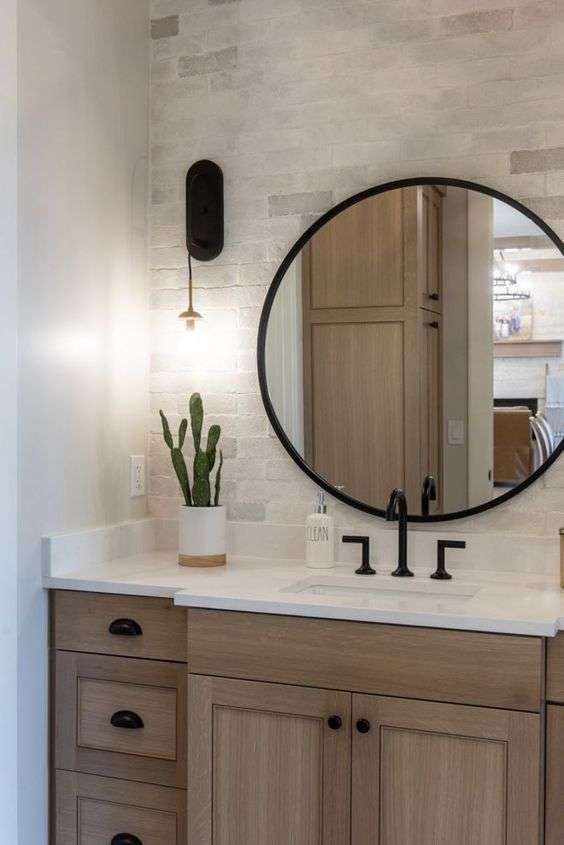
Autonomous bathroom vanity
These vanities placed on the floor without attached to the wall in any way. There are several styles to choose from, with or without storage space included. They are perfect for all types of homes, as installation is simple: just place the vanity and connect the plumbing.
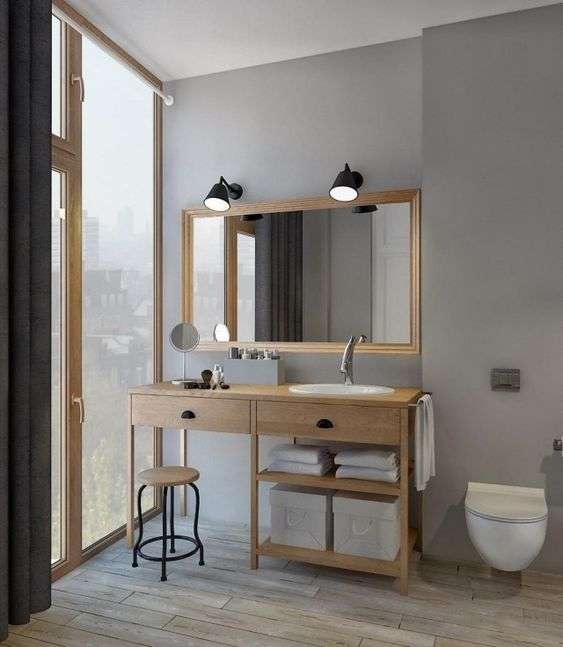
Floating bathroom vanity
These are similar to cabinet vanities, but instead of having a base, we mounted them on the wall. They bring a modern look to the room.
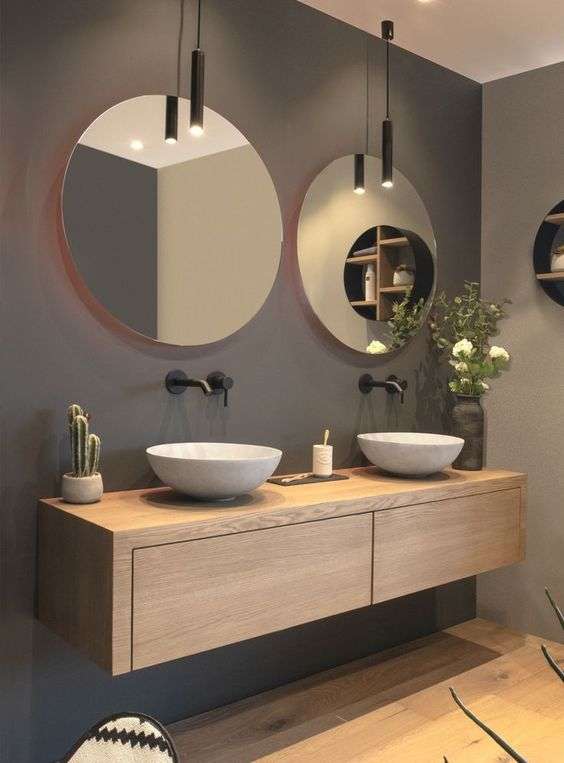
Wall mounted sinks
This sink mounted directly to the wall with specialized brackets, and the plumbing is visible underneath. This sink is more common in older homes and apartments and is ideal if your space or budget is limited.
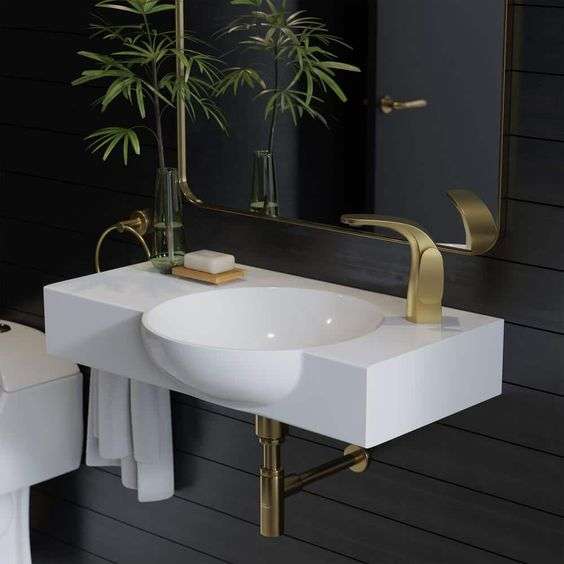
Pedestal sinks
Consisting of a sink resting on a pedestal, these sinks provide an elegant appearance. They are available in one piece or with the sink mounted on the wall with a decorative pillar.
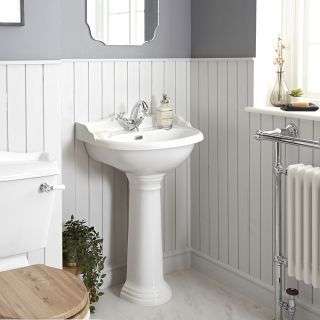
Narrow bathroom vanity
For the customer who needs storage space without clogging up their small bathroom, the narrow vanity is ideal. Made specifically to be slimmer and often requires a specialized sink or faucet, but it frees up the room.
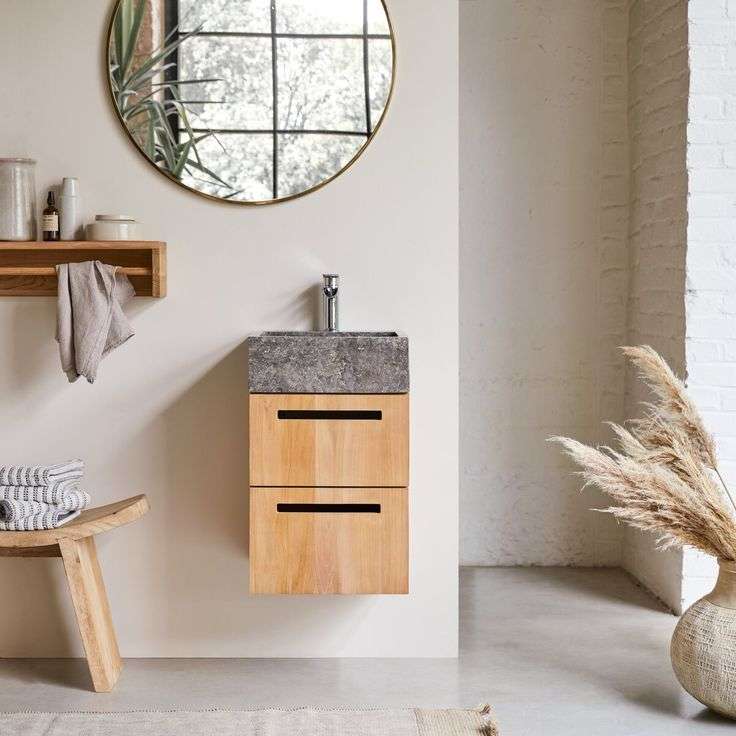
Corner bathroom vanity
These come in many varieties and usually have a cabinet at the bottom. Designed to fit in the corner of your bathroom, this vanity is usually small and curved. It fits well in tight bathrooms with limited plumbing in the corner and offers valuable space savings.
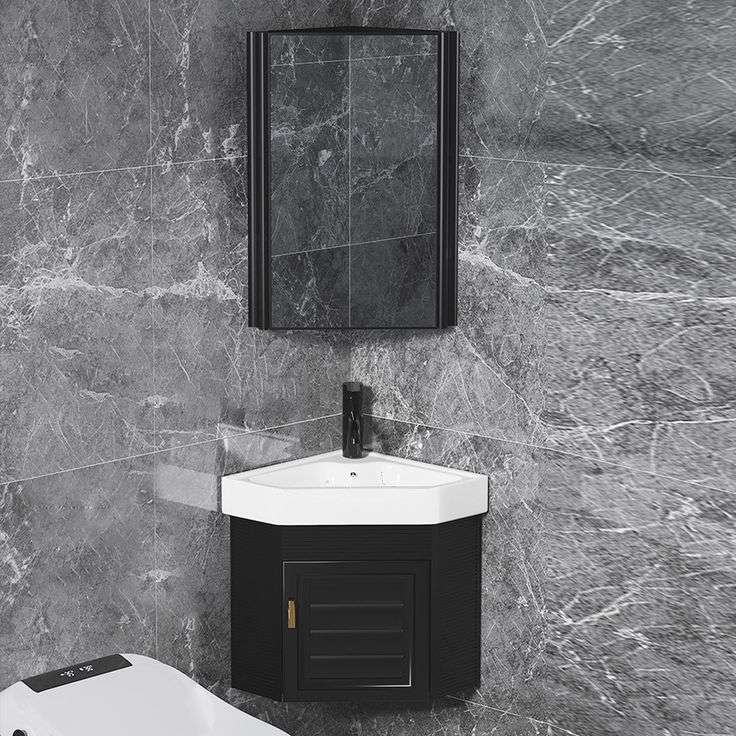
Counterless bathroom vanity
Most types of vanities can be purchased counterless, allowing for more customization. They are ideal for those who want the countertop finish of their dreams.
Console bathroom vanity
If you’ve ever wondered “what if my sink had legs?”, this vanity is for you. Console vanities take the form of a large free-standing or wall-mounted sink, supported by metal legs that reach all the way down to the floor. They usually include a shelf to store your personal belongings and a built-in towel bar.
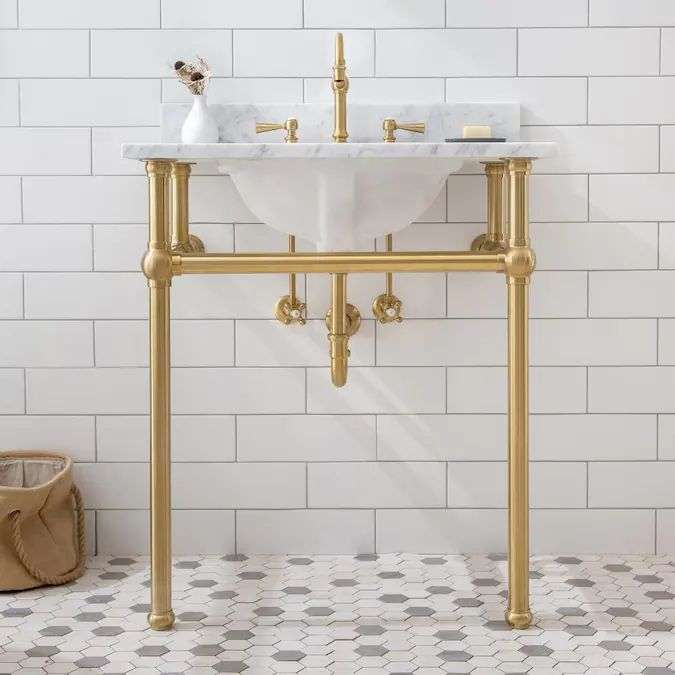
Custom bathroom vanity
Do you want the perfect vanity to complete your luxury bathroom and have the budget to do so? If so, you can have a custom vanity built in your space with the materials, colors, hardware and accessories you want. There is a lot that the intrepid do-it-yourselfer can do, but some materials require the help of a professional.
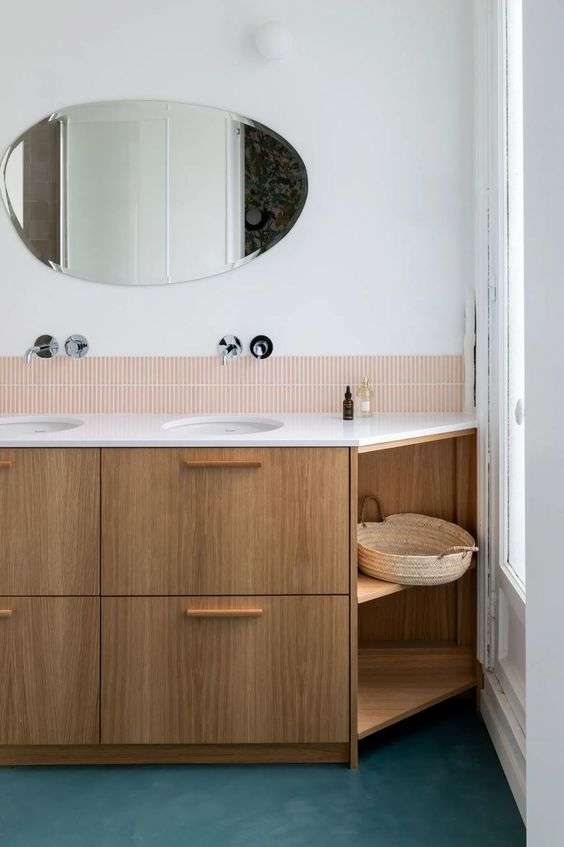
Materials, storage and hardware for bathroom vanity
Now that you know the types of bathroom vanities, you can direct your attention to materials, storage options and hardware. If you’re not planning to purchase cabinets, you can skip to the storage solutions section.
Materials
Your cabinets can be constructed of a variety of materials, the price of which will be influenced by their strength and resistance to mildew. You can get a beautiful wood grain with veneer or solid wood, but solid wood will be much more durable, and therefore expensive. Although you have many options, most pre-built vanities are made of one of these common materials.
Solid Wood
Although somewhat prone to warping, wood vanities are very water resistant and are often stained to showcase the beautiful natural wood grain. You’ll find popular options like oak or maple, which have good moisture resistance without being too expensive.
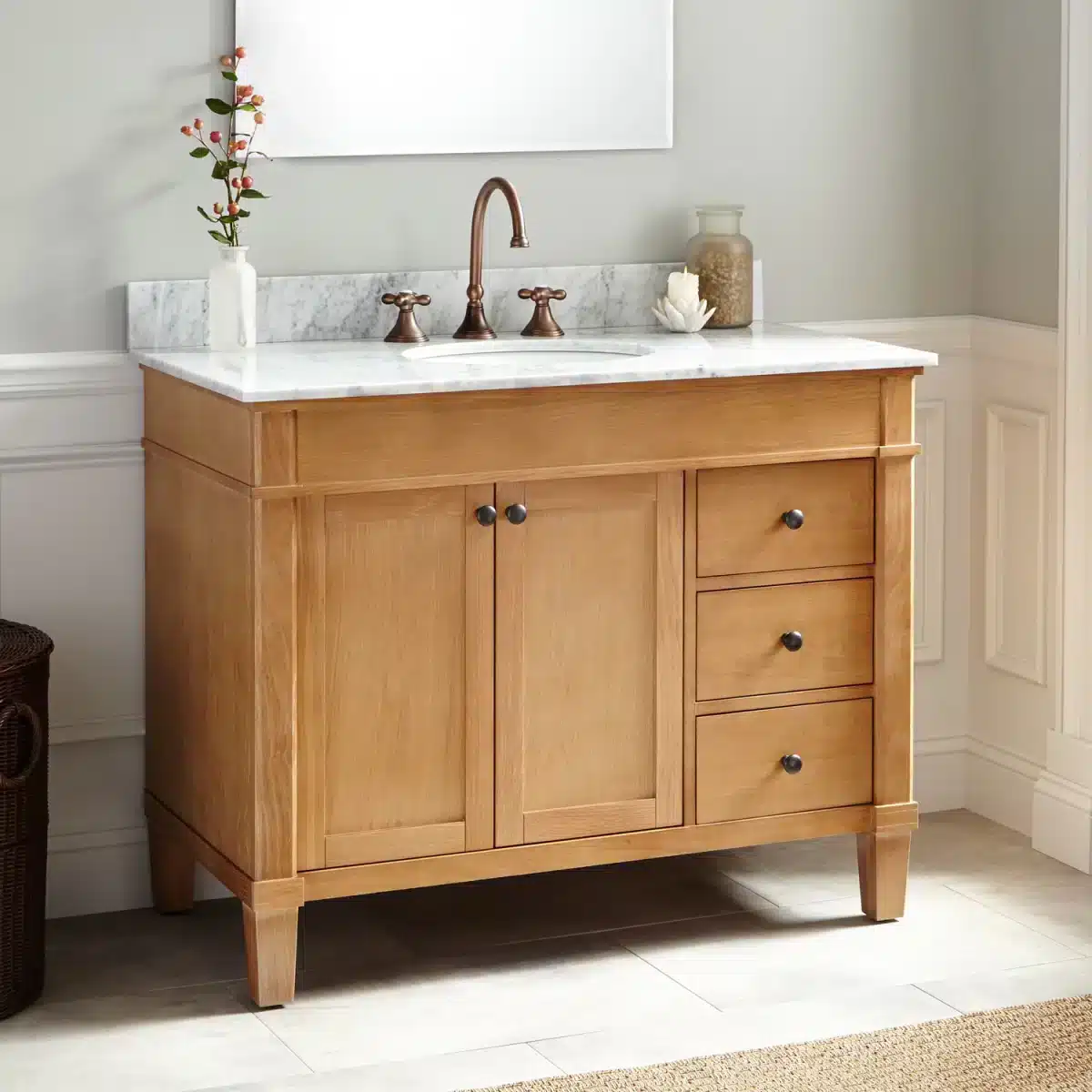
Hevea
Reclaimed from plantation trees that have finished their rubber production time, this wood is an environmentally friendly alternative to other lumber. While affordable and durable, it tends to absorb moisture quickly, which can shorten its life expectancy.
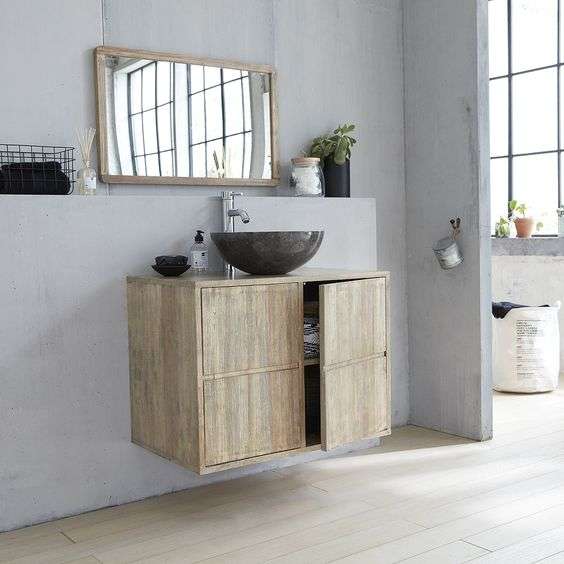
Particleboard
Particleboard is composed of wood chips glued together before a veneer or laminate finish applied to the exterior. It is inexpensive and widely available. However, this type of material is not known for its strength and moisture resistance. It is an environmentally friendly option, since the panels are made of wood scraps. It has different names depending on its coating (like melamine).
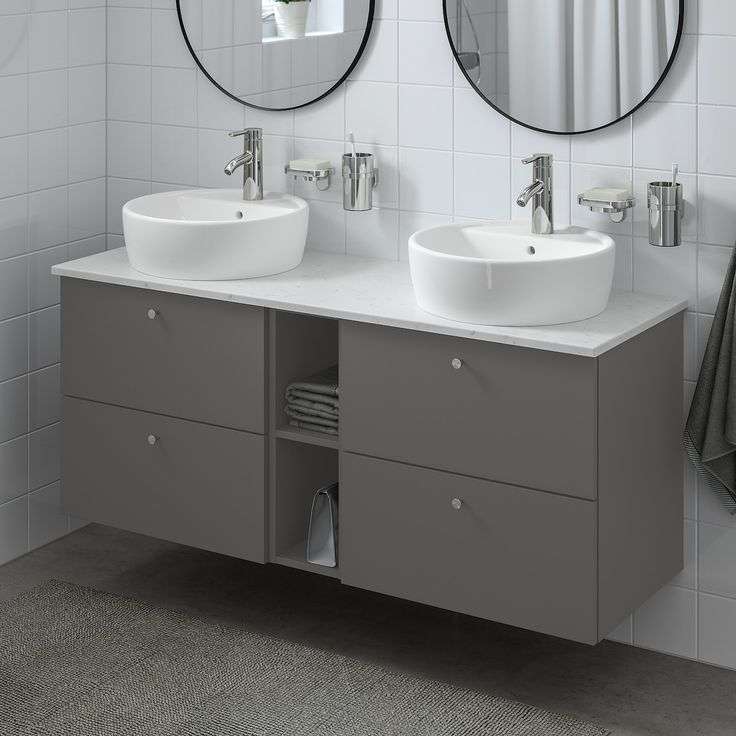
Medium Density Fiberboard (MDF)
This material is made of paper fibers compressed and glued together, giving the appearance of a smooth panel of consistent density. It is also easy to work and finish, making it a popular material. That said, it is not very water resistant, but if the edges are properly sealed, it can last a long time. Also, while MDF is easy to damage, it is simple to repair.
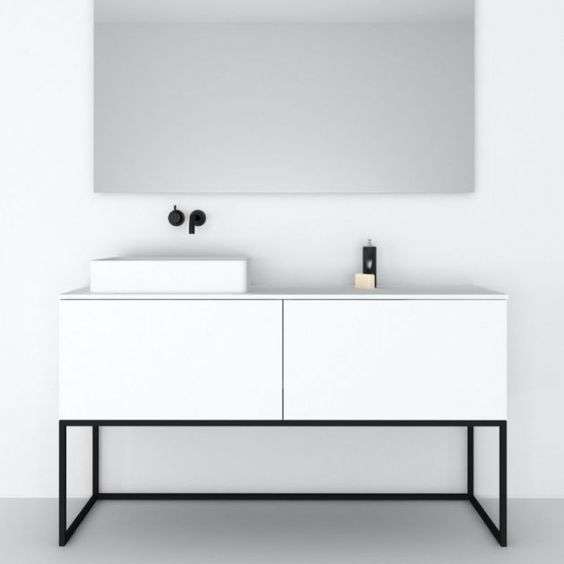
Plywood
Plywood is composed of several layers of wood glued together in alternating grain directions. This style of layering provides superior strength and durability. However, a finish must applied to protect it from moisture and water. It is relatively affordable, although more expensive than MDF or particleboard.
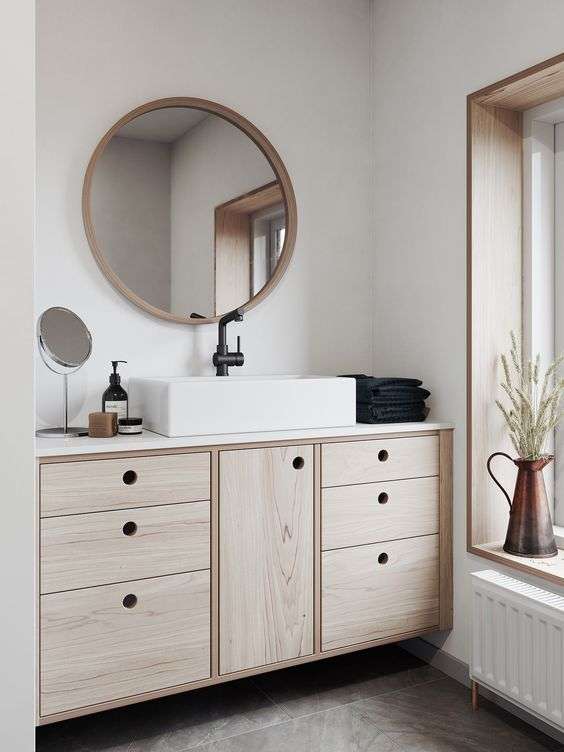
Cast polymer
Materials such as cultured marble and solid surface resin made with molds. Cast polymer gives you more customization options for your vanity and makes it essentially invulnerable to moisture damage. It is a much more expensive option than the others.
Finishes
Plywood, particleboard and MDF all need a finish to protect them. Here are all the options.
Laminate
Laminate is a plastic coating applied to the exterior of wood products. It is available in many colors and styles, from imitation wood to custom printed images. It protects the material perfectly and is prodigiously durable.
Melamine
Melamine is a thinner plastic layer than laminate. It consists of a sheet of decorative paper covered with melamine to protect it. It comes in a multitude of options, plain white, wood imitation, stone imitation, etc.
Veneer
Veneer is composed of thin layers of wood applied to the surface of the building material. It gives the beautiful look of wood grain at a fraction of the cost of solid wood and can also be stained. Veneer is generally more expensive and less water resistant than laminate.
Paint
Some materials such as MDF painted directly. Water-resistant paint seals the material and protects it. All paints sold in an impressive variety of colors.
Bathroom vanity storage solutions
Many storage solutions and organizational tools exist to help you coordinate your belongings. Here are some suggestions for maximizing storage space in your vanity.
- Doors and drawers: You can keep items within easy reach that you’d rather not leave in plain sight.
- Tilting drawers: This is a specific type of drawer, which tilts toward you when you pull it out for easy access to its contents.
- Open shelves: When the shelves are open, the items you place on them will be part of the décor while remaining accessible.
- Drawer organizers: Smaller sectioned containers can help you organize smaller products in your drawers and easily find what you’re looking for.
- Multi-level organizers: Frequently used for makeup, these organizers bring order to your counters by keeping everything in one place.
- Hooks and adhesive holders: By placing hooks or adhesive holders on the inside of your doors, you can store your hair products in a creative way!
- Boxes: A box on a shelf can hold your linens, laundry or any other item. They are flexible to meet your needs and come in a variety of styles.
- Pull-out compartments: Pull-out containers and compartments installed in the cabinets allow you to put all your household products and access them conveniently.
- Built-in towel bars. Some vanities feature towel bars, keeping your linens in use near your sink.
Bathroom vanity counters
The countertop of your bathroom vanity is the piece de resistance, so the material must look good and support constant use. Stone is a common choice because of its elegance, durability and unique appearance. It will instantly give you a prestigious feel! Wood is also a favorite, with its beautiful grain and unmatched warmth. Here are some quality options to consider.
Stone
Whether natural or engineered, stone is always an elegant and distinguished choice. It works with any style, but often creates a more modern feel.
Granite
A common natural stone, granite has strong durability and water resistance when installed properly. Although it is usually mottled with an orange color, it often contains gray or white on the inside, occasionally being entirely white or gray. Its price is high, as is its prestige.
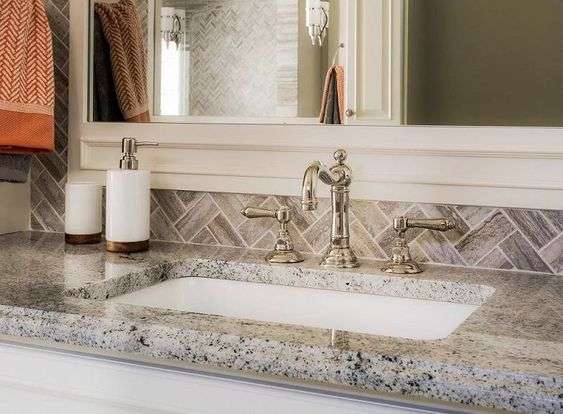
Marble
Marble known throughout the world for its gray and white appearance. It is solid, though not as solid as granite, and simply beautiful. Its price generally based on the pattern in the stone, being more expensive when the veins are whiter and more striking.
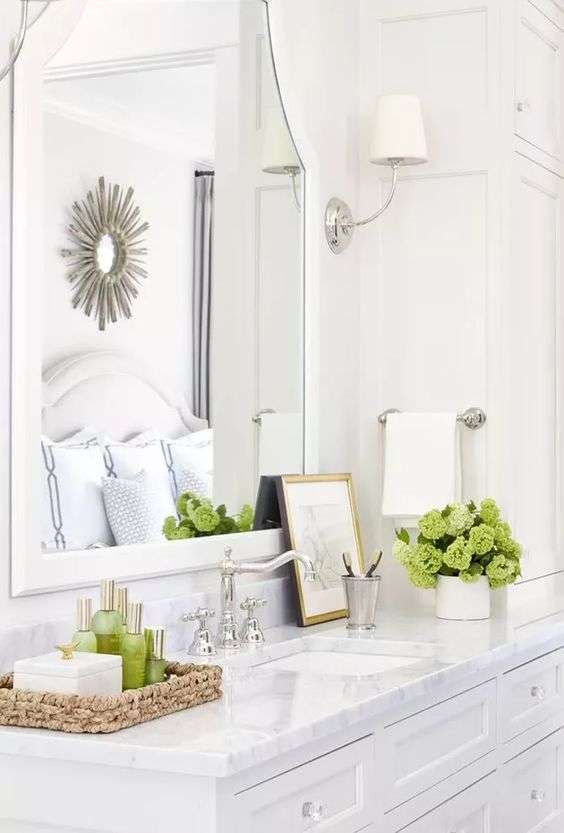
Quartz
Quartz is an engineered stone that has a similar surface finish to marble and granite, but is much stronger and more affordable than these. It is available in a variety of patterns not found in nature and is a popular choice for countertops and floors.
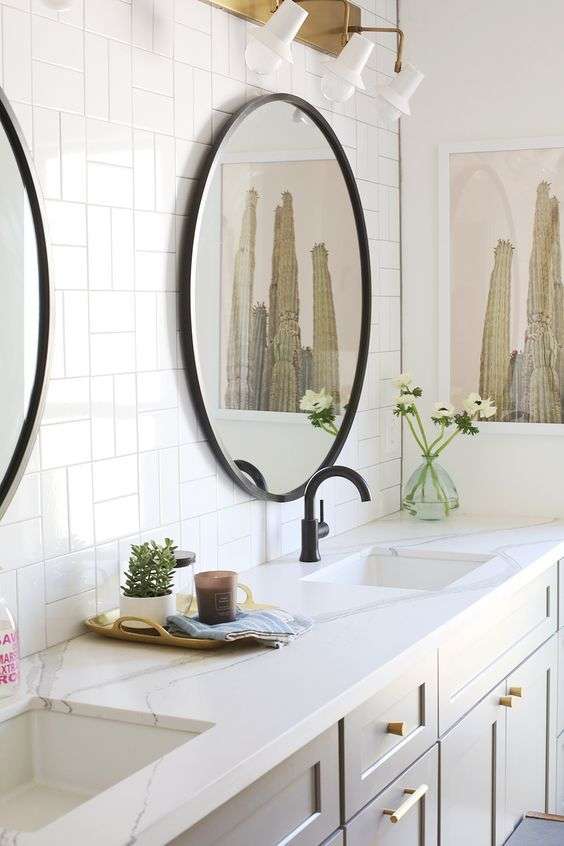
Soapstone
Soapstone, an unusual choice for countertops, has a black and gray appearance, making it more suitable for warm, rustic spaces. The surface does not need to seal like other stones. However, it does have a soapy texture that may be uncomfortable for some. It is a very strong material – it will not chip – but it is quite easy to scratch. It is similar to quartz in price.
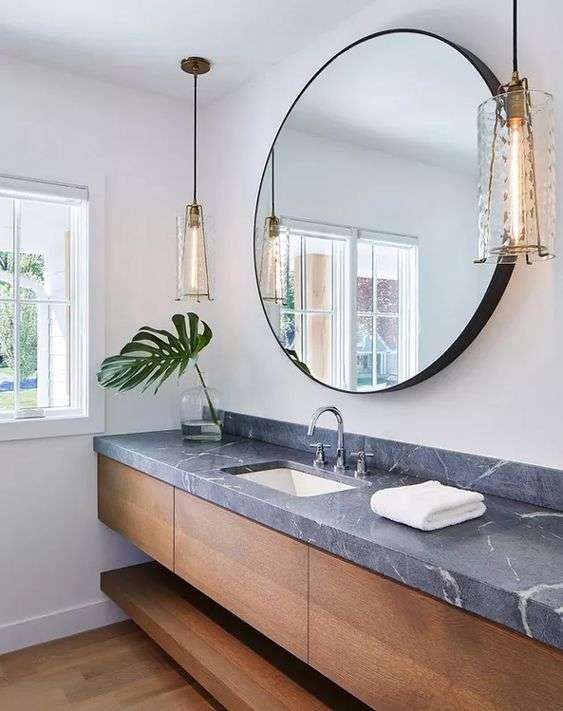
Lava
Lava is a stone extracted directly from volcanic rock. It glazed, fired, and cooled to create a variety of colors and patterns reminiscent of a canvas. It is stronger than all other stone options, not susceptible to staining and very easy to maintain. The disadvantages are that it must purchased separately from the vanity and is extremely expensive.
Wood
Wood reminds us directly of nature and fits well with rustic and antique aesthetics. Since each piece of wood is unique, it offers structural differences that add dimension and contrast to your space.
Solid Wood
The most common version of wood countertops designed to resemble the butcher blocks of yesteryear. When properly sealed, these can last for many years. Their appearance and cost can vary depending on the type of wood used.
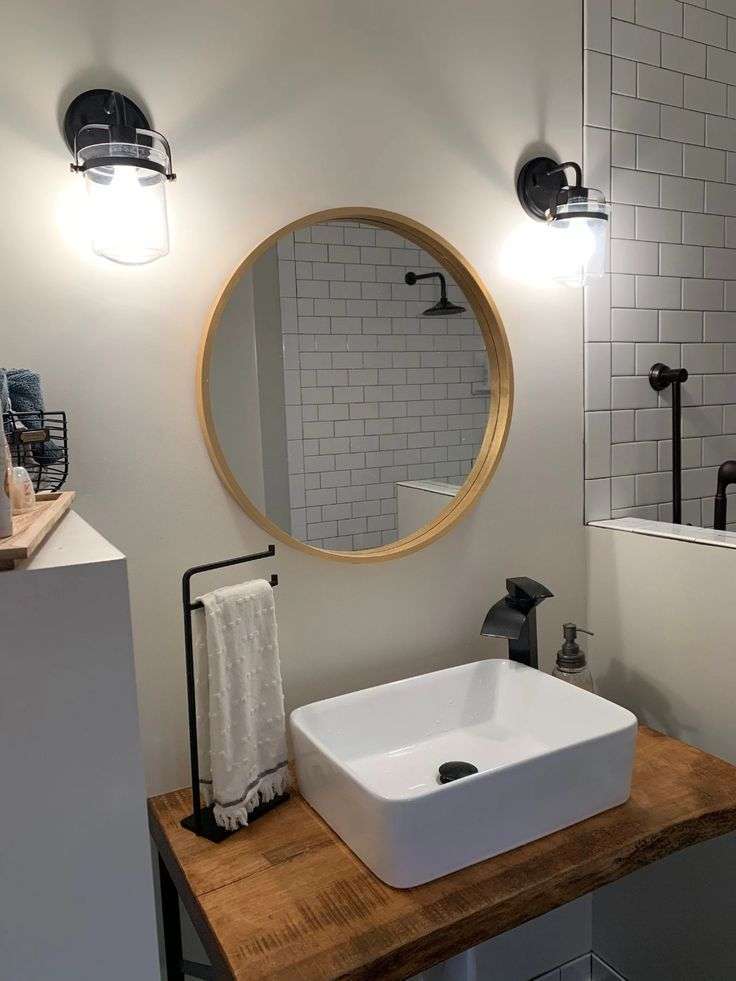
Reclaimed wood
Reclaimed wood countertops give new life to old lumber. These designed by either refurbishing or refinishing old wood products, or by gluing together and sealing pieces of old wood. They create an interesting look by adding a distinctive rustic touch to your bathroom. This type of countertop is environmentally friendly and more affordable than products made from new wood.
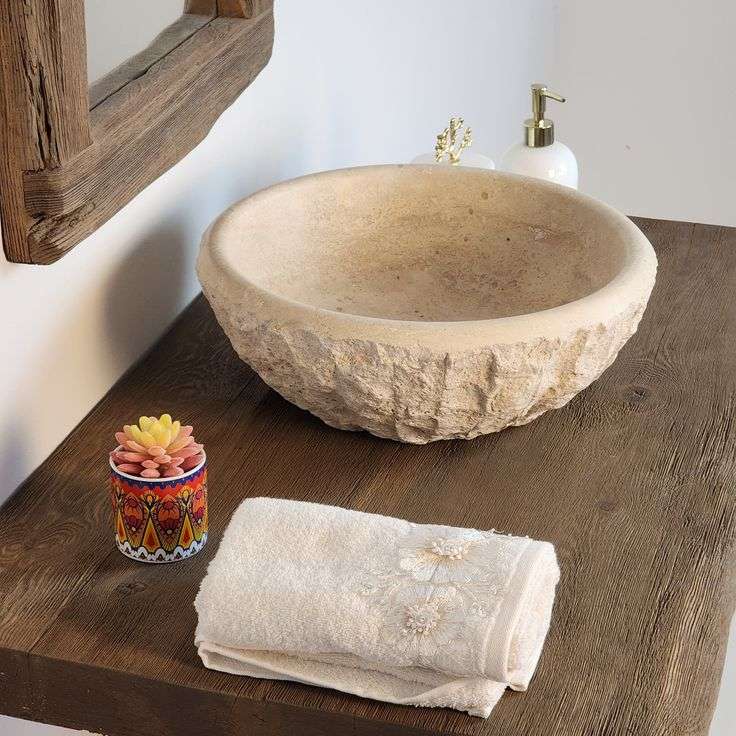
Natural border
A unique piece of wood with a natural edge highlights the outer rings of the tree. Natural edge countertops are unique centerpieces. These rings show the age of the tree as well as its imperfections, something that is not visible on traditional wood countertops. Keep in mind that the wood must seal to protect it and that natural edge pieces can be very expensive.
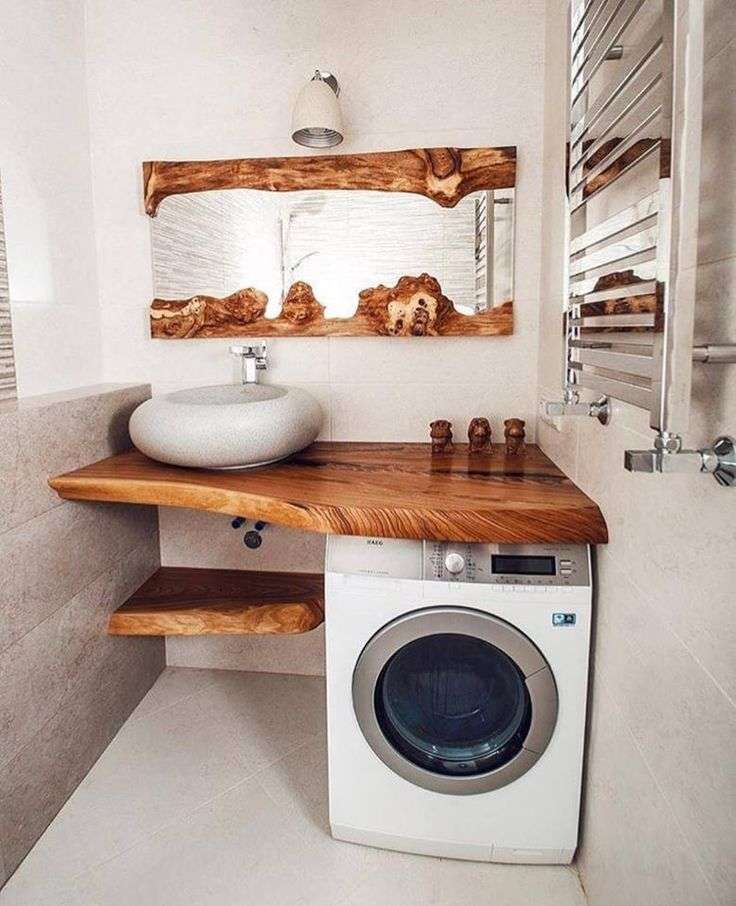
Bamboo
A material that is growing in popularity, bamboo grows extremely fast and can manipulated into any shape required. Bamboo countertops have the appearance of multiple panels tied together with the growth strips visible along the length, giving the wood an attractive finish. It is very strong, inexpensive and environmentally friendly, making it an excellent option.
Other
There are several other materials available for a unique vanity countertop, each with their own advantages and disadvantages.
Concrete
Although very heavy, concrete is a strong and relatively inexpensive material that forms a smooth finish. Although it requires a sealer and professional installation, it continues to grow in popularity. It gives a modern, raw look to any bathroom!
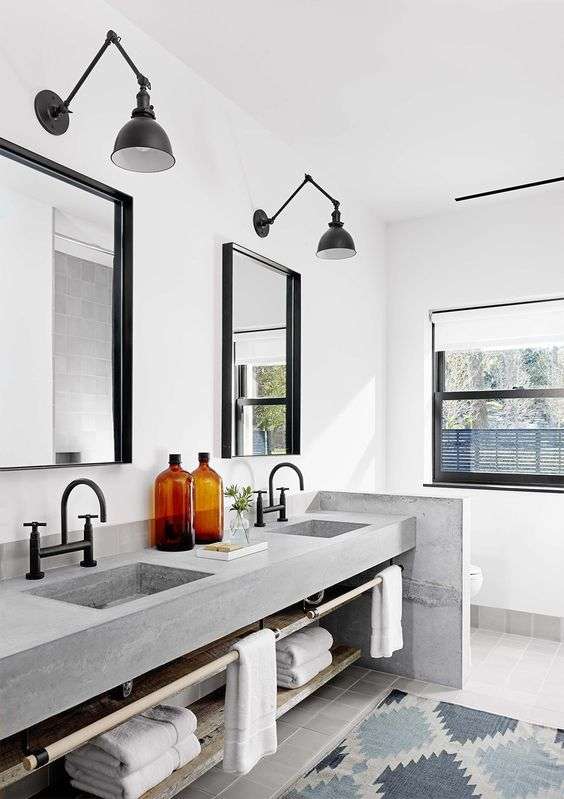
Tile
If you’re looking to create a design that’s uniquely yours, a tile countertop could be just the thing. It designed by installing ceramic tiles over the base material of the countertop. Unfortunately, the finished surface is not smooth, the grout can be difficult to clean and the tiles break easily. The price depends on the tiles used. They are perfect in a small bathroom where a pop of color will give the desired personality.
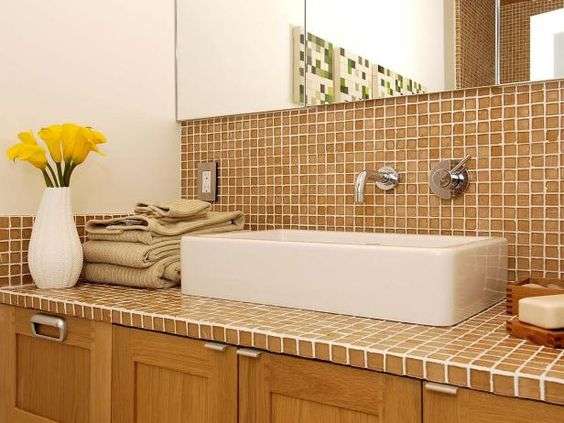
Solid surface resin
Now a mainstay in the kitchen and bathroom, its smooth, even surface is a beautiful addition to any room. It’s available in a variety of colors, almost completely non-porous and stain resistant. Prices are below stone, but above laminate.
Laminate
With its ability to mimic surfaces like stone and wood, laminate is a common material for kitchen and bathroom countertops. One of the reasons it’s so common is that it’s affordable and easy to lay over other materials. While it is not as durable as other countertop materials, it is water resistant.
Recycled Glass
Found in the form of more traditional glass slabs or as a mottled pattern in a variety of colors, recycled glass shines in a unique way. It is durable, easy to maintain, and environmentally friendly. It must installed by a professional to avoid splinters and cracks, which makes it a bit more expensive.
Stainless Steel
Steel, shaped to match any countertop configuration you desire and is waterproof. Although more environmentally friendly and abrasion resistant, it is as expensive to install as marble and can be noisy if there is not a buffer between the stainless steel plate and the vanity.
Porcelain
Made by superheating clay-based materials, porcelain is beautiful, very strong and very water resistant. This smooth material can be difficult to obtain and costs about the same as stone countertops.
Epoxy Resin
Epoxy resin countertops have gained popularity with enthusiastic DIYers due to its flexibility, look and shape. That said, pre-built epoxy countertops can be very expensive, installation can be complicated and maintenance is difficult.
Bathroom Vanity Sinks
Pre-built vanities, designed to accommodate a specific model of sink usually listed on the product description. That said, all types of sinks have their purpose, so be sure to choose your preferred style. Most sinks are made of wrought iron with a ceramic coating, although other materials exist, such as metal and composite resin.
Undermount Sinks
The undermount sink is the most common type of sink. The installation process is simple: you simply insert the sink into a hole cut slightly smaller than the edge of the sink and seal it. Lighter varieties, held in place by clips underneath, while standard models, held in place by their weight.
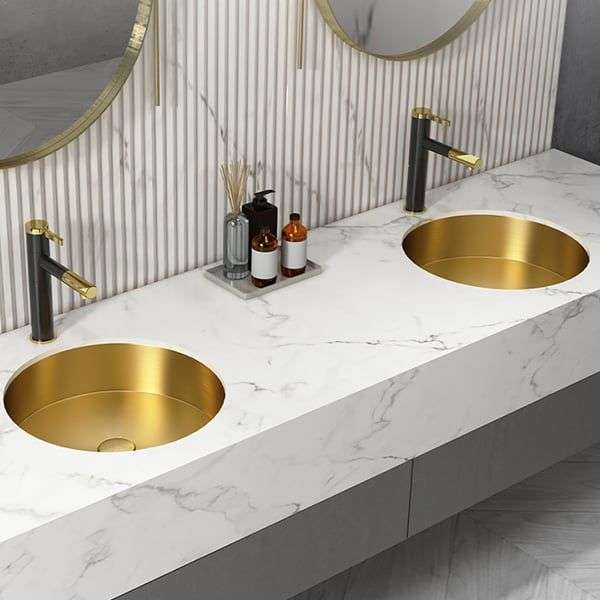
Framed Sinks
Frame sinks are similar to drop-in sinks, but have a metal frame under the rim that is part of the sink. They are easy to install and have a distinctive look.
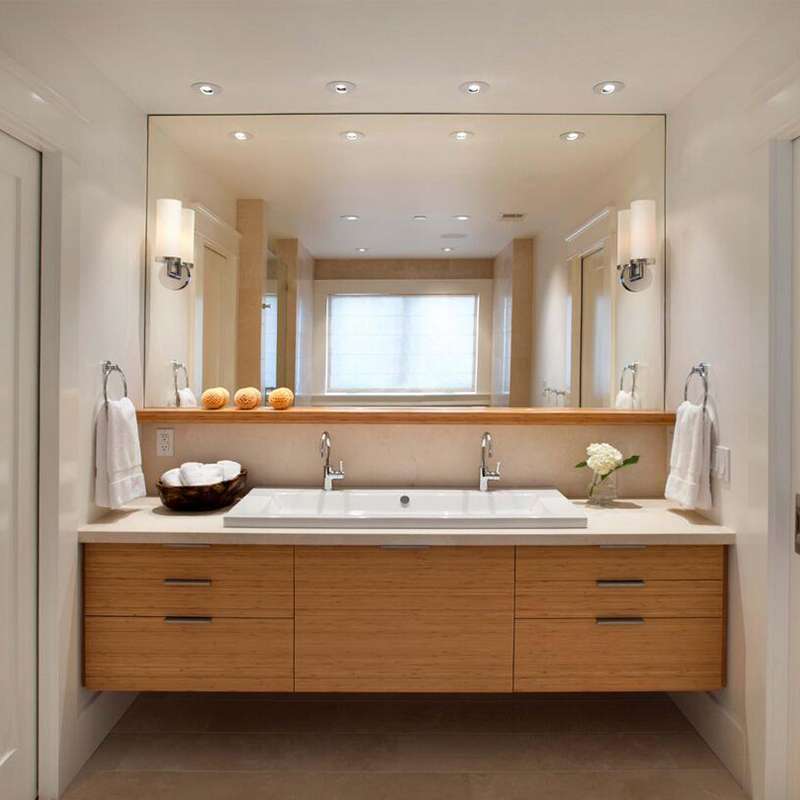
Basin sinks
Unlike undermount sinks, a vessel sink sits on top of the counter. These sinks are decorative focal points and have become extremely popular in recent years due to their impressive design. They require specialized countertops and fittings to accommodate the height of the sink, and are also available in a semi-recessed version.
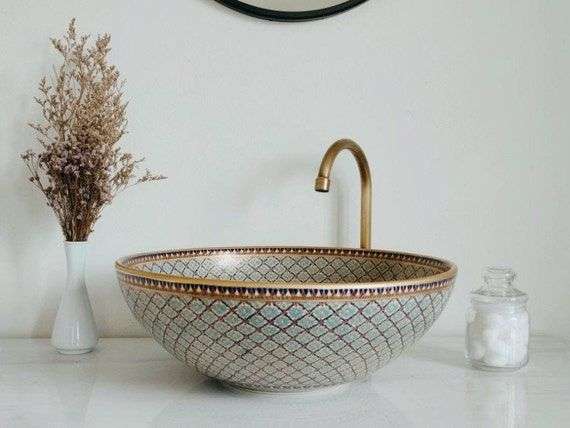
Integrated sinks
Take the form of the countertop itself, and are made of the same material. The countertop is uninterrupted and seamless with no rim at the sink creating a smooth, elegant and modern look.
